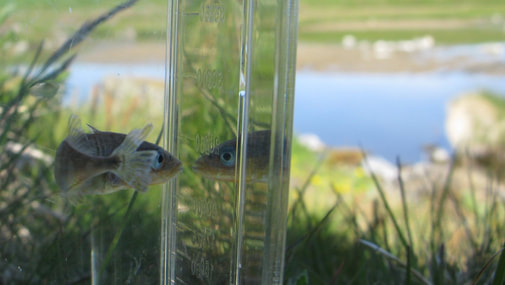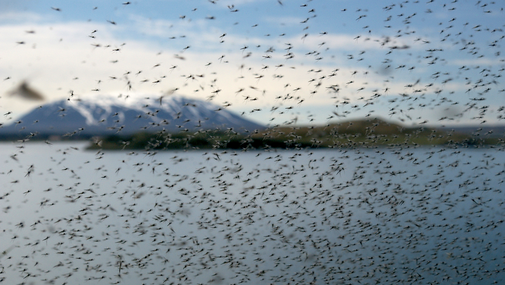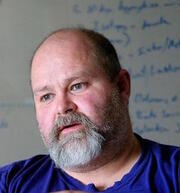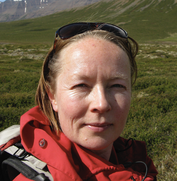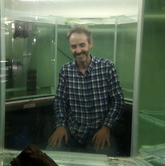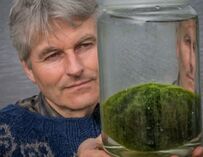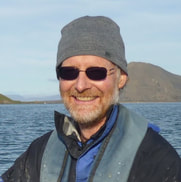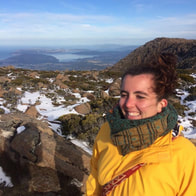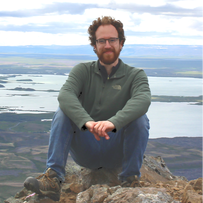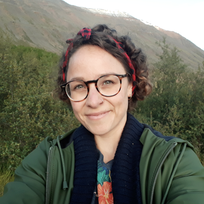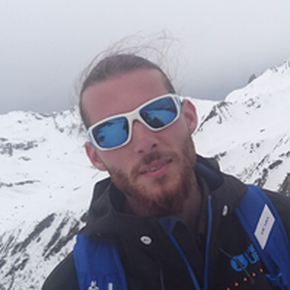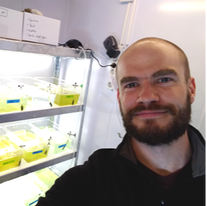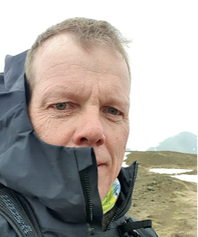The Dynamic Nature of Biodiversity
- Lake Mývatn threespine stickleback as a model -
#MýStickle
The Project in a Nutshell
|
Biological diversity is dynamic. It is altered and maintained via interactions between ecological and evolutionary processes, manifested at different hierarchical levels (from genes to communities and ecosystems), and mediated by the organismal phenotype. In this project we study the interplay among ecological (ECO), evolutionary (EVO) and developmental (DEVO) processes in eco-evolutionary dynamics in the wild. We use threespine stickleback (Gasterosteus aculeatus) inhabiting the spatio-temporally variable lake Mývatn, North East Iceland, as our model system. This project will provide fundamental insight to the processes influencing the evolution of biological diversity as well as the functioning of natural ecosystems. Such “process understanding” is critical also for our ability to protect ecosystem functioning and services - a major challenge facing societies in the anthropocene. Our objectives are to fill knowledge gaps in: 1) The dual role of ecology - how does ecology drive evolution via natural selection and influence organismal development via within and across generation phenotypic plasticity ? 2) The origins of phenotypic variation - what is the relative contribution of the genome, environmentally sensitive developmental processes and transgenerational effects in the organismal phenotype ? 3) The dynamic interactions between phenotypic changes and ecosystem processes - how do genetic and plastic sources of phenotypic variation influence eco-evolutionary dynamics in nature? Lake Myvatn is a fascinating ecosystem in North East Iceland. This lake harbours only three species of fish - and stickleback are by far the most abundant. The lake is famous for its extensive chironomid midge fluctuations - which happen to be the favoured food source of stickleback. Stickleback in the lake inhabit different habitats that differ in temperature (due to geothermal and cold groundwater inflow), vegetation, and invertebrate communities. In addition, several bird species breeding at the lake (especially Arctic tern, Slavonian grebe, red breasted mergansers and the great northern diver) are stickleback predators. Because of the high variability in space (multiple habitat types) and time (extensive ecological fluctuations) - and that the lake is unusually well ecologically studied (see https://ramy.is/) - Mývatn provides a unique opportunity to study spatio-temporal eco-evolutionary processes. For our research, we make use of long-term data sets on threespine stickleback and their main food source, chironomid midges, as well as many other aspects of lake ecology. (For details, see descriptions below). In our research, we use a highly integrative approach (including long-term field surveys, laboratory and mesocosm experiments, genomics and mathematical modelling). This project is funded by Rannis (https://www.rannis.is/) (Project grant: 2009-2012, Grant of excellence (GoE): 2019-2021). Available student projects see below |
We are an International Research Team
Project lead:
|
Prof. Bjarni K. Kristjánsson is the operational leader of the project. He has worked long on the diversity of Icelandic freshwater fishes and has a keen interest on biological diversity of freshwater ecosystems, as well as the developmental basis of resource polymorphism. He has long experience in field work and the hidden insight revealed by geometric morphometrics. He has also found new groundwater amphipod species in Iceland and is one of the founders of the Icelandic beer Centre in Hólar. Nationality: IS.
Contact: bjakk(at)holar.is |
|
Dr. Katja Räsänen is a senior Scientist at the Dept. of Aquatic Ecology, EAWAG, Switzerland and the second lead PI. Katja has extensive experience in studying evolutionary and ecological processes in natural systems and the role of maternal effects in adaptive divergence. Katja brings conceptual insight and integration across the different pieces in this biological puzzle, as well as expertise on transgenerational effects and stickleback. She has been coming to Iceland nearly every year since 2004 - and loves visiting Mývatn despite her allergy to stickleback food (chironomids). Nationality: FI.
Contact: katja.rasanen(at)eawag.ch |
Co-Pls:
|
Prof. Skúli Skúlason, Department of Aquaculture and Fish Biology at HU. Skuli has long had a keen interest in understanding the dynamics of biological diversity, the evolution of resource polymorphism in general, and the diversity of Icelandic freshwater fishes specifically. Skuli brings deep insight to the philosophy of science and the in-depth understanding of biological evolution in an extended Eco-Evo-Devo framework. Nationality: IS.
Contact: Skuli(at)holar.is |
|
Dr. Blake Matthews, Dept. of Fish Ecology & Evolution, EAWAG, Switzerland. Blake has extensive experience studying interactions between evolutionary, ecological, and ecosystem changes. Blake provides expertise on ecosystem ecology, nutritional stoichiometry and eco-evolutionary dynamics of stickleback. Nationality: CA.
Contact: blake.matthews(at)eawag.ch |
|
Prof. Zophonías O. Jónsson, School of Engineering and Natural Sciences, University of Iceland. Zophonias has many years’ experience in studying diversity of Icelandic freshwater fishes at cellular and molecular levels. Zophonias brings expertise in developmental genomics. He is a frequent visitor at Hólar where he aids in incorporating yeast to the beer brewing. Nationality: IS.
Contact: zjons(at)hi.is |
|
Dr. Árni Einarsson, is the Director of the Mývatn Research Station. Arni has studied the ecological systems of Lake Mývatn and the surrounding areas for decades, focusing on food web interactions. Arni brings in a deep and holistic understanding of the ecology of Myvatn, from algae and midges via fish to birds - and not forgetting archeological excavations. Nationality: IS.
Contact: arnie(at)hi.is *Photo by Egill Adalsteinsson |
|
Prof. Anthony Ragnar Ives, University of Wisconsin-Madison, US (IVES LAB) is an ecologist who does both theoretical and empirical work on species interactions and biodiversity. Tony is the lead PI on an USA-NSF 10-year project at Mývatn that started in 2011 to study midge population fluctuations and the impacts they have on the surrounding ecosystem. Tony brings expertise to mathematical modelling of eco-evolutionary processes and his fascination to (un)predictable midge dynamics. Nationality: US.
Contact: arives(at) wisc.edu |
Postdocs and PhD students
|
Kasha Strickland - Postdoc working on genomic and quantitative genetic basis of phenotypic variation in space and time
I am an evolutionary ecologist, with broad interest in how phenotypic variation is maintained in natural populations and the impact this has on evolutionary processes. I have a background in behavioural ecology and quantitative genetics, and did my PhD and first postdoc in Australia. I worked on eastern water dragons, koalas and bottlenose dolphins, before changing climates to move to Iceland to study northern stickleback. In this project, I am interested in understanding microevolutionary processes of the stickleback population of lake Mývatn. To investigate this, I will be genotyping and phenotyping thousands of wild stickleback caught between years 2009 - 2020 - and across a range of habitats - in the lake. I will apply genomic and quantitative genetic approaches, from whole-genome sequencing to more targeted sequencing, to link this to (co)variation in a suite of phenotypes. Nationality: UK. -Funded by Rannis GoE - Contact: kasha(at)holar.is |
|
Joseph Phillips - Postdoc working on eco-evolutionary dynamics and population demography in space and time
I am interested in the role of species interactions and environmental variation in driving population and community dynamics, with extensions to evolutionary and ecosystem processes. I have a particular interest in characterizing and understanding temporal variability in ecological systems. My background is primarily in freshwater settings, and my PhD work focused on interactions between benthic primary producers and aquatic invertebrates in Mývatn. For my postdoctoral research, I am continuing work in Mývatn but with a focus on the population dynamics of threespine stickleback. I am exploring this by fitting dynamic models to long-term monitoring data, with the goal of connecting spatial and temporal variation in demographic rates to the ecological processes that drive them. Nationality: US. -Funded by Rannis GoE - Contact: joseph(at)holar.is |
|
Alessandra Schnider - PhD student working on the role of phenotypic plasticity in microevolution
I am interested in the early developmental stages of threespine stickleback and the development of phenotypic variation in response to contrasting temperature and diet treatments. Furthermore, I will study phenotypic plasticity within and across generations in response to contrasting temperature and diet treatments. I started my PhD at Hólar University and University of Iceland in August 2019. In my masters at the University of Zurich, I studied how relatedness and food availability impacts the social behaviour among wild female vervet monkeys (Chlorocebus aethiops pygerythrus) in South Africa. In my PhD project I will conduct laboratory experiments in which I will rear stickleback from Mývatn in contrasting diet and temperatures. Applying transcriptomics will further help to inform about potential mechanisms of phenotypic plasticity and identify functionally relevant genes. My project will ultimately shed more light on the relative importance of phenotypic plasticity and genes in spatio-temporal diversification. Nationality: CH/IT. - Funded by Rannis GoE - Contact: alessandra(at)holar.is |
|
Benoît Chamiot-clerc - PhD student working on eco-evolutionary feedbacks
I am interested in understanding the factors influencing the evolution of biological diversity at various scales (individuals to communities). I started my PhD at HU and Univ. of Iceland in June 2020 and have recently completed my MSc in Ecology and Evolution (Claude Bernard University, Lyon, France). In my MSc, I studied the different reproductive strategies in a population of Alpine marmots (Marmota marmota). The aim of my PhD is to study the link between phenotypic divergence in threespine stickleback and eco-evolutionary feedbacks in the ecosystem. To do this, I will use mesocosm and field transplant experiments on Myvatn stickleback. Nationality: FR. - Funded by Rannis GoE - Contact: b.chamiotclerc(at)gmail.com |
MSc students and Interns
- Amaya Gauvin, University of Tours, France - Spatial and temporal variation in weight-length relationships of threespine stickleback in Myvatn (remote summer internship 2020)
- Bavya Vadavalli Indian Institute of Science Education and Research, Mohali (IISER-Mohali), India - Spatial and temporal variation in weight-length relationships of threespine stickleback in Myvatn (remote summer internship 2020)
- Quentin Amerigo, Ecole Centrale de Marseille, France - starting June 2020
- Tanguy Grandmoughin, MSc internship, University of Tours, France
- Thomas Weisbeek, MSc internship, HAS university, Netherlands - Structure of multivariate morphometrics of stickleback in lake Myvatn (remote summer internship 2020)
- Rares Cristea, MSc student, Univ. of Fribourg/Eawag, Switzerland - bioinformatics of Myvatn threespine stickleback genome (Rares will start his MSc under supervision of Katja and Kasha in Oct 2020)
Technicians
|
Stephen Price
I am a research technician with a varied background, working on numerous projects at the University of Liverpool before moving to Hólar University in July 2019. I initially worked in an insect lab investigating endosymbionts, specifically male killing bacteria such as Wolbachia and Spiroplasma. I then moved on to large scale fieldwork projects where wild rodents were used as a model to study transmission dynamics of parasites, immunodynamics and infectious disease. More recently I transitioned into aquatic ecology and worked on a project where Daphnia were used as a model to understand more about rapid adaptation and phenotypic plasticity with a focus on climate change (thermal tolerance). To do this we set up large (long-term) mesocosm experiments where it was possible to manipulate temperature and mimic extreme heat waves in a semi-natural setting. At Hólar University, I will be culturing freshwater planktonic crustaceans for use as live feed in rearing experiments on the stickleback. I will also be involved with mesocosm (Hólar valley) and field transplant experiments (Lake Mývatn). Nationality: UK. - funded by Rannis GoE - Contact: price(at)holar.is |
Available student projects
We have many different types of student projects available - from ecology to evolution and experiments to genomics and field work.
We are dedicated to equal opportunities and healthy working environment and place a strong emphasis on the career development of team members. We welcome applications from any gender or ethnic group. If you are interested in an internship or MSc project - contact one of us (see emails above)
We are dedicated to equal opportunities and healthy working environment and place a strong emphasis on the career development of team members. We welcome applications from any gender or ethnic group. If you are interested in an internship or MSc project - contact one of us (see emails above)

